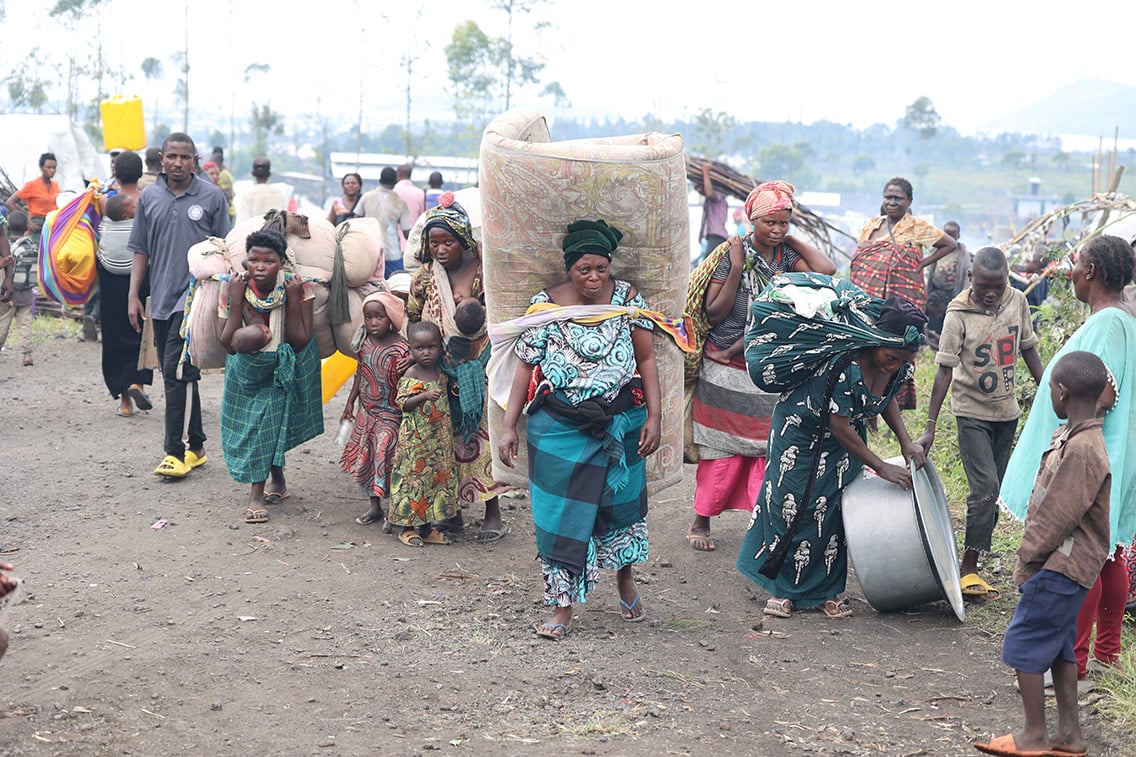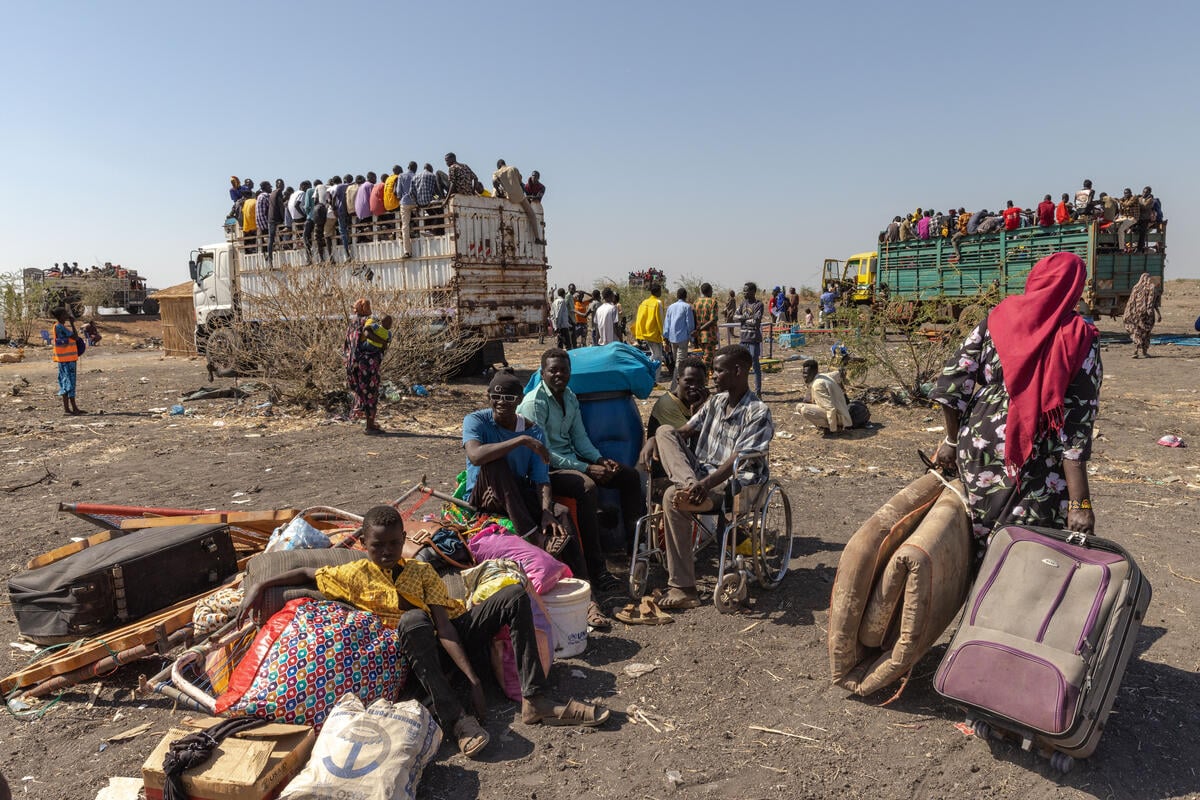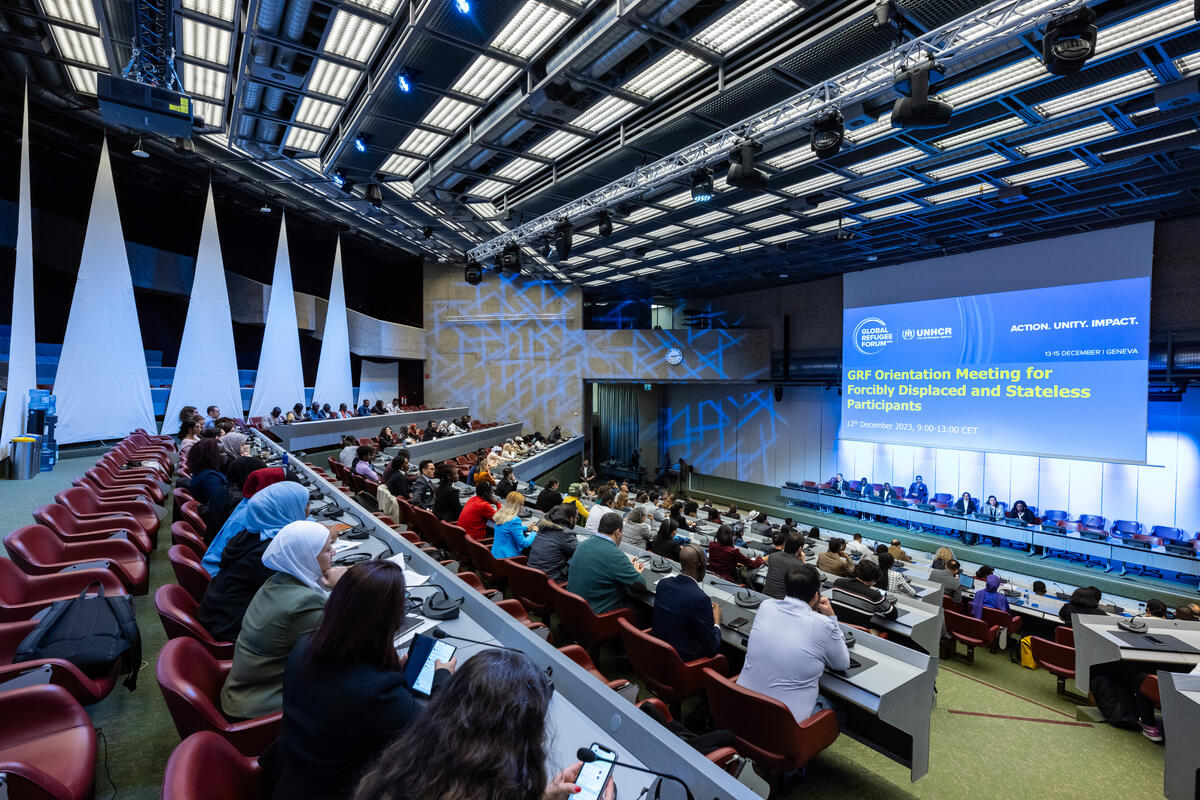Aid efforts to help new Congolese refugees in Uganda focus on shelter, water shortages
Aid efforts to help new Congolese refugees in Uganda focus on shelter, water shortages
A week after Congolese refugees began fleeing into western Uganda, our efforts are focused on trying to reach the thousands of people still spread across the hills along the border, and simultaneously to manage the situation at an increasingly crowded transit facility some 25 kilometres deeper into Uganda.
As of yesterday evening (July 18), 15,500 refugees had been transferred away from the unsafe border to the Bubukwanga transit centre, where there are protection and other services. The transit centre is managed by the Ugandan Red Cross and has maximum capacity of 25,000 people even with a new 4.5 acre- land allocation by the Ugandan government. The Uganda Red Cross Society estimates that there are 66,000 Congolese refugees from the new fighting.
UNHCR and government partners are running 15 trucks non-stop all day transferring refugees and their possessions to the facility. We have moved refugees entirely from four of five primary school sites where they had initially been staying. The main site where some 5,000 refugees remain is Butogo primary school.
At Bubukwanga, after the Ugandan Red Cross erected 229 tents for individual families, we have switched to putting up communal shelters to provide shelter for more people more quickly. So far, 13 large communal shelters have been erected. Some refugees are setting up their own makeshift homes out of blankets they were given at the site. We are seeing people using mosquito nets they brought with them as "roofing".
The refugees began fleeing a week ago, on 11 July, after an attack on Kamango in Eastern DRC. From the accounts we have heard, many fled for their lives bringing nothing with them, and then spending several nights in the bush, where there were cases of women giving birth. People walked about 15 kilometers to reach Butogo primary school, just across the border, where they had little food and were waiting for transfer to the transit centre.
At the transit centre, two communal kitchens have been set up, supplying three hot meals a day with food provided by WFP. A third kitchen is under construction. Nearly 80 individual pit latrines have been dug. So far there have been no outbreaks of disease.
Through contributions of partners including UNICEF, Médecins Sans Frontières (France), Oxfam and the Lutheran World Foundation enough water tanks are arriving in the transit centre. However, we remain concerned about water supplies as the number of refugees in the centre grows. We are using three trucks but are only able to bring in a bare minimum amount of water. We need partners to contribute a fourth water truck while UNICEF is repairing the district water system.
Children between the ages of nine months and 15 years - most of whom have never been to a doctor in their lives - are now being vaccinated against measles and receiving Vitamin A supplements and deworming tablets. Medical teams are also going tent-to-tent to identify sick refugee children and find anyone whose nutrition might have suffered from going a week or more without a proper meal during their flight or stay on the border.
Médecins Sans Frontières is going along the border providing medical care and providing a nutritional supplement to refugee children among those still waiting to be transferred. The Ugandan Ministry of Health is also beefing up numbers of medical staff and medical supplies in the area to help refugees.
The transit centre is intended to be the refugees' home for no more than three weeks. It is considered safe, but UNHCR and Uganda's Office of the Prime Minister are identifying other possibilities for relocation to places where they could get protection, plots of land to farm for themselves, as well as shelter materials and food rations. They would be able to live, to a large extent, just like Ugandan villagers, accessing the health, water and education services also available in the settlements.
The arrival of thousands of refugees disrupted classes for a week at many schools in Bundibugyo District where the refugees were housed. We are working with the Office of the Prime Minister to make sure classes can resume next week. UNICEF and Oxfam plan to clean blocked latrines at the schools and other partners are repairing desks so pupils can get back to learning.
Although planning for a possible lengthy stay of refugees is happening, at the Lamiya Bridge in Busunga, our staff saw hundreds of refugees returning to Eastern DRC yesterday, carrying mattresses, ducks and jerry cans, and tugging goats on ropes. Many other refugees are living with friends and relatives on the Ugandan side, and it is not clear how many remain along the border.
For further information on this topic, please contact:
- In Uganda on mission: Kitty McKinsey (Regional) on mobile +254 735 337 608
- In Mbarara: Lucy Beck on mobile +256 77 271 013
- In Kampala: Karen Ringuette on mobile +256 772 701115
- In Geneva: Leo Dobbs on mobile: +41 79 883 6347
- In Geneva: Adrian Edwards on mobile +41 79 557 9120








